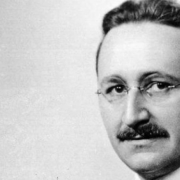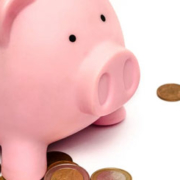Today, as the last article in this series, we present the words of Say himself, taken from his masterpiece
A Treatise on Political Economy.
Does the first paragraph not sadly resonate today?
OF THE DEMAND OR MARKET FOR PRODUCTS
![ATreatiseOnPoliticalEconomy[1]](http://109.104.118.106/~toby/wp-content/uploads/2013/07/ATreatiseOnPoliticalEconomy1.jpg) It is common to hear adventurers in the different channels of industry assert, that their difficulty lies not in the production, but in the disposal of commodities; that products would always be abundant, if there were but a ready demand, or market for them. When the demand for their commodities is slow, difficult, and productive of little advantage, they pronounce money to be scarce; the grand object of their desire is, a consumption brisk enough to quicken sales and keep up prices. But ask them what peculiar causes and circumstances facilitate the demand for their products, and you will soon perceive that most of them have extremely vague notions of these matters; that their observation of facts is imperfect, and their explanation still more so; that they treat doubtful points as matter of certainty, often pray for what is directly opposite to their interests, and importunately solicit from authority a protection of the most mischievous tendency.
To enable us to form clear and correct practical notions in regard to markets for the products of industry, we must carefully analyse the best established and most certain facts, and apply to them the inferences we have already deduced from a similar way of proceeding; and thus perhaps we may arrive at new and important truths, that may serve to enlighten the views of the agents of industry, and to give confidence to the measures of governments anxious to afford them encouragement.
A man who applies his labour to the investing of objects with value by the creation of utility of some sort, can not expect such a value to be appreciated and paid for, unless where other men have the means of purchasing it. Now, of what do these means consist? Of other values of other products, likewise the fruits of industry, capital, and land. Which leads us to a conclusion that may at first sight appear paradoxical, namely, that it is production which opens a demand for products.
Should a tradesman say, “I do not want other products for my woollens, I want money,” there could be little difficulty in convincing him that his customers could not pay him in money, without having first procured it by the sale of some other commodities of their own. “Yonder farmer,” he may be told, “will buy your woollens, if his crops be good, and will buy more or less according to their abundance or scantiness; he can buy none at all, if his crops fail altogether. Neither can you buy his wool nor his corn yourself, unless you contrive to get woollens or some other article to buy withal. You say, you only want money; I say, you want other commodities, and not money. For what, in point of fact, do you want the money? Is it not for the purchase of raw materials or stock for your trade, or victuals for your support? [1] Wherefore, it is products that you want, and not money. The silver coin you will have received on the sale of your own products, and given in the purchase of those of other people, will the next moment execute the same office between other contracting parties, and so from one to another to infinity; just as a public vehicle successively transports objects one after another. If you can not find a ready sale for your commodity, will you say, it is merely for want of a vehicle to transport it? For, after all, money is but the agent of the transfer of values. Its whole utility has consisted in conveying to your hands the value of the commodities, which your customer has sold, for the purpose of buying again from you; and the very next purchase you make, it will again convey to a third person the value of the products you may have sold to others. So that you will have bought, and every body must buy, the objects of want or desire, each with the value of his respective products transformed into money for the moment only. Otherwise, how could it be possible that there should now be bought and sold in France five or six times as many commodities, as in the miserable reign of Charles VI.? Is it not obvious, that five or six times as many commodities must have been produced, and that they must have served to purchase one or the other?”
Thus, to say that sales are dull, owing to the scarcity of money, is to mistake the means for the cause; an error that proceeds from the circumstance, that almost all produce is in the first instance exchanged for money, before it is ultimately converted into other produce: and the commodity, which recurs so repeatedly in use, appears to vulgar apprehensions the most important of commodities, and the end and object of all transactions, whereas it is only the medium. Sales cannot be said to be dull because money is scarce, but because other products are so. There is always money enough to conduct the circulation and mutual interchange of other values, when those values really exist. Should the increase of traffic require more money to facilitate it, the want is easily supplied, and is a strong indication of prosperity—a proof that a great abundance of values has been created, which it is wished to exchange for other values. In such cases, merchants know well enough how to find substitutes for the product serving as the medium of exchange or money [2]: and money itself soon pours in, for this reason, that all produce naturally gravitates to that place where it is most in demand. It is a good sign when the business is too great for the money; just in the same way as it is a good sign when the goods are too plentiful for the warehouses.
When a superabundant article can find no vent, the scarcity of money has so little to do with the obstruction of its sale, that the sellers would gladly receive its value in goods for their own consumption at the current price of the day: they would not ask for money, or have any occasion for that product, since the only use they could make of it would be to convert it forthwith into articles of their own consumption. [3]
This observation is applicable to all cases, where there is a supply of commodities or of services in the market. They will universally find the most extensive demand in those places, where the most of values are produced; because in no other places are the sole means of purchase created, that is, values. Money performs but a momentary function in this double exchange; and when the transaction is finally closed, it will always be found, that one kind of commodity has been exchanged for another.
It is worth while to remark, that a product is no sooner created, than it, from that instant, affords a market for other products to the full extent of its own value. When the producer has put the finishing hand to his product, he is most anxious to sell it immediately, lest its value should diminish in his hands. Nor is he less anxious to dispose of the money he may get for it; for the value of money is also perishable. But the only way of getting rid of money is in the purchase of some product or other. Thus, the mere circumstance of the creation of one product immediately opens a vent for other products.
For this reason, a good harvest is favourable, not only to the agriculturist, but likewise to the dealers in all commodities generally. The greater the crop, the larger are the purchases of the growers. A bad harvest, on the contrary, hurts the sale of commodities at large. And so it is also with the products of manufacture and commerce. The success of one branch of commerce supplies more ample means of purchase, and consequently opens a market for the products of all the other branches; on the other hand, the stagnation of one channel of manufacture, or of commerce, is felt in all the rest.
But it may be asked, if this be so, how does it happen, that there is at times so great a glut of commodities in the market, and so much difficulty in finding a vent for them? Why cannot one of these superabundant commodities be exchanged for another? I answer that the glut of a particular commodity arises from its having outrun the total demand for it in one or two ways; either because it has been produced in excessive abundance, or because the production of other commodities has fallen short.
It is because the production of some commodities has declined, that other commodities are superabundant. To use a more hackneyed phrase, people have bought less, because they have made less profit [4]; and they have made less profit for one or two causes; either they have found difficulties in the employment of their productive means, or these means have themselves been deficient.
It is observable, moreover, that precisely at the same time that one commodity makes a loss, another commodity is making excessive profit [5]. And, since such profits must operate as a powerful stimulus to the cultivation of that particular kind of products, there must needs be some violent means, or some extraordinary cause, a political or natural convulsion, or the avarice or ignorance of authority, to perpetuate this scarcity on the one hand, and consequent glut on the other. No sooner is the cause of this political disease removed, than the means of production feel a natural impulse towards the vacant channels, the replenishment of which restores activity to all the others. One kind of production would seldom outstrip every other, and its products be disproportionately cheapened, were production left entirely free [6].
Should a producer imagine, that many other classes, yielding no material products, are his customers and consumers equally with the classes that raise themselves a product of their own; as, for example, public functionaries, physicians, lawyers, churchmen, &c., and thence infer, that there is a class of demand other than that of the actual producers, he would but expose the shallowness and superficiality of his ideas. A priest goes to a shop to buy a gown or a surplice; he takes the value, that is to make the purchase, in the form of money. Whence had he that money? From some tax-gatherer who has taken it from a tax-payer. But whence did this latter derive it? From the value he has himself produced. This value, first produced by the tax-payer, and afterwards turned into money, and given to the priest for his salary, has enabled him to make the purchase. The priest stands in the place of the producer, who might himself have laid the value of his product on his own account, in the purchase, perhaps, not of a gown or surplice, but of some other more serviceable product. The consumption of the particular product, the gown or surplice, has but supplanted that of some other product. It is quite impossible that the purchase of one product can be affected, otherwise than by the value of another [7].
From this important truth may be deduced the following important conclusions:—
1. That, in every community the more numerous are the producers, and the more various their productions, the more prompt, numerous, and extensive are the markets for those productions; and, by a natural consequence, the more profitable are they to the producers; for price rises with the demand. But this advantage is to be derived from real production alone, and not from a forced circulation of products; for a value once created is not augmented in its passage from one hand to another, nor by being seized and expended by the government, instead of by an individual. The man, that lives upon the productions of other people, originates no demand for those productions; he merely puts himself in the place of the producer, to the great injury of production, as we shall presently see.
2. That each individual is interested in the general prosperity of all, and that the success of one branch of industry promotes that of all the others. In fact, whatever profession or line of business a man may devote himself to, he is the better paid and the more readily finds employment, in proportion as he sees others thriving equally around him. A man of talent, that scarcely vegetates in a retrograde state of society, would find a thousand ways of turning his faculties to account in a thriving community that could afford to employ and reward his ability. A merchant established in a rich and populous town, sells to a much larger amount than one who sets up in a poor district, with a population sunk in indolence and apathy. What could an active manufacturer, or an intelligent merchant, do in a small deserted and semi-barbarous town in a remote corner of Poland or Westphalia? Though in no fear of a competitor, he could sell but little, because little was produced; whilst at Paris, Amsterdam, or London, in spite of the competition of a hundred dealers in his own line, he might do business on the largest scale. The reason is obvious: he is surrounded with people who produce largely in an infinity of ways, and who make purchases, each with his respective products, that is to say, with the money arising from the sale of what he may have produced.
This is the true source of the gains made by the towns’ people out of the country people, and again by the latter out of the former; both of them have wherewith to buy more largely, the more amply they themselves produce. A city, standing in the centre of a rich surrounding country, feels no want of rich and numerous customers; and, on the other hand, the vicinity of an opulent city gives additional value to the produce of the country. The division of nations into agricultural, manufacturing, and commercial, is idle enough. For the success of a people in agriculture is a stimulus to its manufacturing and commercial prosperity; and the flourishing condition of its manufacture and commerce reflects a benefit upon its agriculture also [8].
The position of a nation, in respect of its neighbours, is analogous to the relation of one of its provinces to the others, or of the country to the town; it has an interest in their prosperity, being sure to profit by their opulence. The government of the United States, therefore, acted most wisely, in their attempt, about the year 1802, to civilize their savage neighbours, the Creek Indians. The design was to introduce habits of industry amongst them, and make them producers capable of carrying on a barter trade with the States of the Union; for there is nothing to be got by dealing with a people that have nothing to pay. It is useful and honourable to mankind, that one nation among so many should conduct itself uniformly upon liberal principles. The brilliant results of this enlightened policy will demonstrate, that the systems and theories really destructive and fallacious, are the exclusive and jealous maxims acted upon by the old European governments, and by them most impudently styled practical truths, for no other reason, as it would seem, than because they have the misfortune to put them in practice. The United States will have the honour of proving experimentally, that true policy goes hand-in-hand with moderation and humanity [9].
3. From this fruitful principle, we may draw this further conclusion, that it is no injury to the internal or national industry and production to buy and import commodities from abroad; for nothing can be bought from strangers, except with native products, which find a vent in this external traffic. Should it be objected; that this foreign produce may have been bought with specie, I answer, specie is not always a native product, but must have been bought itself with the products of native industry; so that, whether the foreign articles be paid for in specie or in home products, the vent for national industry is the same in both cases [10].
4. The same principle leads to the conclusion, that the encouragement of mere consumption is no benefit to commerce; for the difficulty lies in supplying the means, not in stimulating the desire of consumption; and we have seen that production alone, furnishes those means. Thus, it is the aim of good government to stimulate production, of bad government to encourage consumption.
For the same reason that the creation of a new product is the opening of a new market for other products, the consumption or destruction of a product is the stoppage of a vent for them. This is no evil where the end of the product has been answered by its destruction, which end is the satisfying of some human want, or the creation of some new product designed for such a satisfaction. Indeed, if the nation be in a thriving condition, the gross national re-production exceeds the gross consumption. The consumed products have fulfilled their office, as it is natural and fitting they should; the consumption, however, has opened no new market, but just the reverse [11].
Having once arrived at the clear conviction, that the general demand for products is brisk in proportion to the activity of production, we need not trouble ourselves much to inquire towards what channel of industry production may be most advantageously directed. The products created give rise to various degrees of demand, according to the wants, the manners, the comparative capital, industry, and natural resources of each country; the article most in request, owing to the competition of buyers, yields the best interest of money to the capitalist, the largest profits to the adventurer, and the best wages to the labourer; and the agency of their respective services is naturally attracted by these advantages towards those particular channels.
In a community, city, province, or nation, that produces abundantly, and adds every moment to the sum of its products, almost all the branches of commerce, manufacture, and generally of industry, yield handsome profits, because the demand is great, and because there is always a large quantity of products in the market, ready to bid for new productive services. And, vice versâ, wherever, by reason of the blunders of the nation or its government, production is stationary, or does not keep pace with consumption, the demand gradually declines, the value of the product is less than the charges of its production; no productive exertion is properly rewarded; profits and wages decrease; the employment of capital becomes less advantageous and more hazardous; it is consumed piecemeal, not through extravagance, but through necessity, and because the sources of profit are dried up [12]. The labouring classes experience a want of work; families before in tolerable circumstances, are more cramped and confined; and those before in difficulties are left altogether destitute. Depopulation, misery, and returning barbarism, occupy the place of abundance and happiness.
Such are the concomitants of declining production, which are only to be remedied by frugality, intelligence, activity, and freedom.
It is common to hear adventurers in the different channels of industry assert, that their difficulty lies not in the production, but in the disposal of commodities; that products would always be abundant, if there were but a ready demand, or market for them. When the demand for their commodities is slow, difficult, and productive of little advantage, they pronounce money to be scarce; the grand object of their desire is, a consumption brisk enough to quicken sales and keep up prices. But ask them what peculiar causes and circumstances facilitate the demand for their products, and you will soon perceive that most of them have extremely vague notions of these matters; that their observation of facts is imperfect, and their explanation still more so; that they treat doubtful points as matter of certainty, often pray for what is directly opposite to their interests, and importunately solicit from authority a protection of the most mischievous tendency.
To enable us to form clear and correct practical notions in regard to markets for the products of industry, we must carefully analyse the best established and most certain facts, and apply to them the inferences we have already deduced from a similar way of proceeding; and thus perhaps we may arrive at new and important truths, that may serve to enlighten the views of the agents of industry, and to give confidence to the measures of governments anxious to afford them encouragement.
A man who applies his labour to the investing of objects with value by the creation of utility of some sort, can not expect such a value to be appreciated and paid for, unless where other men have the means of purchasing it. Now, of what do these means consist? Of other values of other products, likewise the fruits of industry, capital, and land. Which leads us to a conclusion that may at first sight appear paradoxical, namely, that it is production which opens a demand for products.
Should a tradesman say, “I do not want other products for my woollens, I want money,” there could be little difficulty in convincing him that his customers could not pay him in money, without having first procured it by the sale of some other commodities of their own. “Yonder farmer,” he may be told, “will buy your woollens, if his crops be good, and will buy more or less according to their abundance or scantiness; he can buy none at all, if his crops fail altogether. Neither can you buy his wool nor his corn yourself, unless you contrive to get woollens or some other article to buy withal. You say, you only want money; I say, you want other commodities, and not money. For what, in point of fact, do you want the money? Is it not for the purchase of raw materials or stock for your trade, or victuals for your support? [1] Wherefore, it is products that you want, and not money. The silver coin you will have received on the sale of your own products, and given in the purchase of those of other people, will the next moment execute the same office between other contracting parties, and so from one to another to infinity; just as a public vehicle successively transports objects one after another. If you can not find a ready sale for your commodity, will you say, it is merely for want of a vehicle to transport it? For, after all, money is but the agent of the transfer of values. Its whole utility has consisted in conveying to your hands the value of the commodities, which your customer has sold, for the purpose of buying again from you; and the very next purchase you make, it will again convey to a third person the value of the products you may have sold to others. So that you will have bought, and every body must buy, the objects of want or desire, each with the value of his respective products transformed into money for the moment only. Otherwise, how could it be possible that there should now be bought and sold in France five or six times as many commodities, as in the miserable reign of Charles VI.? Is it not obvious, that five or six times as many commodities must have been produced, and that they must have served to purchase one or the other?”
Thus, to say that sales are dull, owing to the scarcity of money, is to mistake the means for the cause; an error that proceeds from the circumstance, that almost all produce is in the first instance exchanged for money, before it is ultimately converted into other produce: and the commodity, which recurs so repeatedly in use, appears to vulgar apprehensions the most important of commodities, and the end and object of all transactions, whereas it is only the medium. Sales cannot be said to be dull because money is scarce, but because other products are so. There is always money enough to conduct the circulation and mutual interchange of other values, when those values really exist. Should the increase of traffic require more money to facilitate it, the want is easily supplied, and is a strong indication of prosperity—a proof that a great abundance of values has been created, which it is wished to exchange for other values. In such cases, merchants know well enough how to find substitutes for the product serving as the medium of exchange or money [2]: and money itself soon pours in, for this reason, that all produce naturally gravitates to that place where it is most in demand. It is a good sign when the business is too great for the money; just in the same way as it is a good sign when the goods are too plentiful for the warehouses.
When a superabundant article can find no vent, the scarcity of money has so little to do with the obstruction of its sale, that the sellers would gladly receive its value in goods for their own consumption at the current price of the day: they would not ask for money, or have any occasion for that product, since the only use they could make of it would be to convert it forthwith into articles of their own consumption. [3]
This observation is applicable to all cases, where there is a supply of commodities or of services in the market. They will universally find the most extensive demand in those places, where the most of values are produced; because in no other places are the sole means of purchase created, that is, values. Money performs but a momentary function in this double exchange; and when the transaction is finally closed, it will always be found, that one kind of commodity has been exchanged for another.
It is worth while to remark, that a product is no sooner created, than it, from that instant, affords a market for other products to the full extent of its own value. When the producer has put the finishing hand to his product, he is most anxious to sell it immediately, lest its value should diminish in his hands. Nor is he less anxious to dispose of the money he may get for it; for the value of money is also perishable. But the only way of getting rid of money is in the purchase of some product or other. Thus, the mere circumstance of the creation of one product immediately opens a vent for other products.
For this reason, a good harvest is favourable, not only to the agriculturist, but likewise to the dealers in all commodities generally. The greater the crop, the larger are the purchases of the growers. A bad harvest, on the contrary, hurts the sale of commodities at large. And so it is also with the products of manufacture and commerce. The success of one branch of commerce supplies more ample means of purchase, and consequently opens a market for the products of all the other branches; on the other hand, the stagnation of one channel of manufacture, or of commerce, is felt in all the rest.
But it may be asked, if this be so, how does it happen, that there is at times so great a glut of commodities in the market, and so much difficulty in finding a vent for them? Why cannot one of these superabundant commodities be exchanged for another? I answer that the glut of a particular commodity arises from its having outrun the total demand for it in one or two ways; either because it has been produced in excessive abundance, or because the production of other commodities has fallen short.
It is because the production of some commodities has declined, that other commodities are superabundant. To use a more hackneyed phrase, people have bought less, because they have made less profit [4]; and they have made less profit for one or two causes; either they have found difficulties in the employment of their productive means, or these means have themselves been deficient.
It is observable, moreover, that precisely at the same time that one commodity makes a loss, another commodity is making excessive profit [5]. And, since such profits must operate as a powerful stimulus to the cultivation of that particular kind of products, there must needs be some violent means, or some extraordinary cause, a political or natural convulsion, or the avarice or ignorance of authority, to perpetuate this scarcity on the one hand, and consequent glut on the other. No sooner is the cause of this political disease removed, than the means of production feel a natural impulse towards the vacant channels, the replenishment of which restores activity to all the others. One kind of production would seldom outstrip every other, and its products be disproportionately cheapened, were production left entirely free [6].
Should a producer imagine, that many other classes, yielding no material products, are his customers and consumers equally with the classes that raise themselves a product of their own; as, for example, public functionaries, physicians, lawyers, churchmen, &c., and thence infer, that there is a class of demand other than that of the actual producers, he would but expose the shallowness and superficiality of his ideas. A priest goes to a shop to buy a gown or a surplice; he takes the value, that is to make the purchase, in the form of money. Whence had he that money? From some tax-gatherer who has taken it from a tax-payer. But whence did this latter derive it? From the value he has himself produced. This value, first produced by the tax-payer, and afterwards turned into money, and given to the priest for his salary, has enabled him to make the purchase. The priest stands in the place of the producer, who might himself have laid the value of his product on his own account, in the purchase, perhaps, not of a gown or surplice, but of some other more serviceable product. The consumption of the particular product, the gown or surplice, has but supplanted that of some other product. It is quite impossible that the purchase of one product can be affected, otherwise than by the value of another [7].
From this important truth may be deduced the following important conclusions:—
1. That, in every community the more numerous are the producers, and the more various their productions, the more prompt, numerous, and extensive are the markets for those productions; and, by a natural consequence, the more profitable are they to the producers; for price rises with the demand. But this advantage is to be derived from real production alone, and not from a forced circulation of products; for a value once created is not augmented in its passage from one hand to another, nor by being seized and expended by the government, instead of by an individual. The man, that lives upon the productions of other people, originates no demand for those productions; he merely puts himself in the place of the producer, to the great injury of production, as we shall presently see.
2. That each individual is interested in the general prosperity of all, and that the success of one branch of industry promotes that of all the others. In fact, whatever profession or line of business a man may devote himself to, he is the better paid and the more readily finds employment, in proportion as he sees others thriving equally around him. A man of talent, that scarcely vegetates in a retrograde state of society, would find a thousand ways of turning his faculties to account in a thriving community that could afford to employ and reward his ability. A merchant established in a rich and populous town, sells to a much larger amount than one who sets up in a poor district, with a population sunk in indolence and apathy. What could an active manufacturer, or an intelligent merchant, do in a small deserted and semi-barbarous town in a remote corner of Poland or Westphalia? Though in no fear of a competitor, he could sell but little, because little was produced; whilst at Paris, Amsterdam, or London, in spite of the competition of a hundred dealers in his own line, he might do business on the largest scale. The reason is obvious: he is surrounded with people who produce largely in an infinity of ways, and who make purchases, each with his respective products, that is to say, with the money arising from the sale of what he may have produced.
This is the true source of the gains made by the towns’ people out of the country people, and again by the latter out of the former; both of them have wherewith to buy more largely, the more amply they themselves produce. A city, standing in the centre of a rich surrounding country, feels no want of rich and numerous customers; and, on the other hand, the vicinity of an opulent city gives additional value to the produce of the country. The division of nations into agricultural, manufacturing, and commercial, is idle enough. For the success of a people in agriculture is a stimulus to its manufacturing and commercial prosperity; and the flourishing condition of its manufacture and commerce reflects a benefit upon its agriculture also [8].
The position of a nation, in respect of its neighbours, is analogous to the relation of one of its provinces to the others, or of the country to the town; it has an interest in their prosperity, being sure to profit by their opulence. The government of the United States, therefore, acted most wisely, in their attempt, about the year 1802, to civilize their savage neighbours, the Creek Indians. The design was to introduce habits of industry amongst them, and make them producers capable of carrying on a barter trade with the States of the Union; for there is nothing to be got by dealing with a people that have nothing to pay. It is useful and honourable to mankind, that one nation among so many should conduct itself uniformly upon liberal principles. The brilliant results of this enlightened policy will demonstrate, that the systems and theories really destructive and fallacious, are the exclusive and jealous maxims acted upon by the old European governments, and by them most impudently styled practical truths, for no other reason, as it would seem, than because they have the misfortune to put them in practice. The United States will have the honour of proving experimentally, that true policy goes hand-in-hand with moderation and humanity [9].
3. From this fruitful principle, we may draw this further conclusion, that it is no injury to the internal or national industry and production to buy and import commodities from abroad; for nothing can be bought from strangers, except with native products, which find a vent in this external traffic. Should it be objected; that this foreign produce may have been bought with specie, I answer, specie is not always a native product, but must have been bought itself with the products of native industry; so that, whether the foreign articles be paid for in specie or in home products, the vent for national industry is the same in both cases [10].
4. The same principle leads to the conclusion, that the encouragement of mere consumption is no benefit to commerce; for the difficulty lies in supplying the means, not in stimulating the desire of consumption; and we have seen that production alone, furnishes those means. Thus, it is the aim of good government to stimulate production, of bad government to encourage consumption.
For the same reason that the creation of a new product is the opening of a new market for other products, the consumption or destruction of a product is the stoppage of a vent for them. This is no evil where the end of the product has been answered by its destruction, which end is the satisfying of some human want, or the creation of some new product designed for such a satisfaction. Indeed, if the nation be in a thriving condition, the gross national re-production exceeds the gross consumption. The consumed products have fulfilled their office, as it is natural and fitting they should; the consumption, however, has opened no new market, but just the reverse [11].
Having once arrived at the clear conviction, that the general demand for products is brisk in proportion to the activity of production, we need not trouble ourselves much to inquire towards what channel of industry production may be most advantageously directed. The products created give rise to various degrees of demand, according to the wants, the manners, the comparative capital, industry, and natural resources of each country; the article most in request, owing to the competition of buyers, yields the best interest of money to the capitalist, the largest profits to the adventurer, and the best wages to the labourer; and the agency of their respective services is naturally attracted by these advantages towards those particular channels.
In a community, city, province, or nation, that produces abundantly, and adds every moment to the sum of its products, almost all the branches of commerce, manufacture, and generally of industry, yield handsome profits, because the demand is great, and because there is always a large quantity of products in the market, ready to bid for new productive services. And, vice versâ, wherever, by reason of the blunders of the nation or its government, production is stationary, or does not keep pace with consumption, the demand gradually declines, the value of the product is less than the charges of its production; no productive exertion is properly rewarded; profits and wages decrease; the employment of capital becomes less advantageous and more hazardous; it is consumed piecemeal, not through extravagance, but through necessity, and because the sources of profit are dried up [12]. The labouring classes experience a want of work; families before in tolerable circumstances, are more cramped and confined; and those before in difficulties are left altogether destitute. Depopulation, misery, and returning barbarism, occupy the place of abundance and happiness.
Such are the concomitants of declining production, which are only to be remedied by frugality, intelligence, activity, and freedom.
Notes for this chapter
1. Even when money is obtained with a view to hoard or bury it, the ultimate object is always to employ it in a purchase of some kind. The heir of the lucky finder uses it in that way, if the miser do not; for money, as money, has no other use than to buy with.
2. By bills at sight, or after date, bank-notes, running-credits, write-offs, &c. as at London and Amsterdam.
3. I speak here of their aggregate consumption, whether unproductive and designed to satisfy the personal wants of themselves and their families, or expended in the sustenance of reproductive industry. The woollen or cotton manufacturer operates a two-fold consumption of wool and cotton: 1. For his personal wear. 2. For the supply of his manufacture; but, be the purpose of his consumption what it may, whether personal gratification or reproduction, he must needs buy what he consumes with what he produces.
4. Individual profits must, in every description of production, from the general merchant to the common artisan, be derived from the participation in the values produced. The ratio of that participation will form the subject of Book II., infrà.
5. The reader may easily apply these maxims to any time or country he is acquainted with. We have had a striking instance in France during the years 1811, 1812, and 1813; when the high prices of colonial produce of wheat, and other articles, went hand-in-hand with the low price of many others that could find no advantageous market.
6. These considerations have hitherto been almost wholly overlooked, though forming the basis of correct conclusions in matters of commerce, and of its regulation by the national authority. The right course where it has, by good luck been pursued, appears to have been selected by accident, or, at most, by a confused idea of its propriety, without either self-conviction, or the ability to convince other people.
Sismondi, who seems not to have very well understood the principles laid down in this and the three first chapters of Book II. of this work, instances the immense quantity of manufactured products with which England has of late inundated the markets of other nations, as a proof, that it is impossible for industry to be too productive. (Nouv. Prin. liv. iv. c. 4.) But the glut thus occasioned proves nothing more than the feebleness of production in those countries that have been thus glutted with English manufactures. Did Brazil produce wherewithal to purchase the English goods exported thither, those goods would not glut her market. Were England to admit the import of the products of the United States, she would find a better market for her own in those States. The English government, by the exorbitance of its taxation upon import and consumption, virtually interdicts to its subjects many kinds of importation, thus obliging the merchant to offer to foreign countries a higher price for those articles, whose import is practicable, as sugar, coffee, gold, silver, &c. for the price of the precious metals to them is enhanced by the low price of their commodities, which accounts for the ruinous returns of their commerce.
I would not be understood to maintain in this chapter, that one product can not be raised in too great abundance, in relation to all others; but merely that nothing is more favourable to the demand of one product, than the supply of another; that the import of English manufactures into Brazil would cease to be excessive and be rapidly absorbed, did Brazil produce on her side returns sufficiently ample; to which end it would be necessary that the legislative bodies of either country should consent, the one to free production, the other to free importation. In Brazil every thing is grasped by monopoly, and property is not exempt from the invasion of the government. In England, the heavy duties are a serious obstruction to the foreign commerce of the nation, inasmuch as they circumscribe the choice of returns. I happen myself to know of a most valuable and scientific collection of natural history, which could not be imported from Brazil into England by reason of the exorbitant duties.*
- * The views of Sismondi, in this particular, have been since adopted by our own Malthus, and those of our author by Ricardo. This difference of opinion has given rise to an interesting discussion between our author and Malthus, to whom he has recently addressed a correspondence on this and other parts of the science. Were any thing wanting to confirm the arguments of this chapter, it would be supplied by a reference to his Lettre 1, à M. Malthus. Sismondi has vainly attempted to answer Ricardo, but has made no mention of his original antagonist. Vide Annales de Legislation, No. 1. art. 3. Geneve, 1820. Translator.
7. The capitalist, in spending the interest of his capital, spends his portion of the products raised by the employment of that capital. The general rules that regulate the ratio he receives will be investigated in Book II., infrà. Should he ever spend the principal, still he consumes products only; for capital consists of products, devoted indeed to reproductive, but susceptible of unproductive consumption; to which it is in fact consigned whenever it is wasted or dilapidated.
8. A productive establishment on a large scale is sure to animate the industry of the whole neighbourhood. “In Mexico,” says Humboldt, “the best cultivated tract, and that which brings to the recollection of the traveller the most beautiful part of French scenery, is the level country extending from Salamanca as far as Silao, Guanaxuato, and Villa de Leon, and encircling the richest mines of the known world. Wherever the veins of precious metal have been discovered and worked, even in the most desert part of the Cordilleras, and in the most barren and insulated spots, the working of the mines, instead of interrupting the business of superficial cultivation, has given it more than usual activity. The opening of a considerable vein is sure to be followed by the immediate erection of a town; farming concerns are established in the vicinity; and the spot so lately insulated in the midst of wild and desert mountains, is soon brought into contact with the tracts before in tillage.” Essai pol. sur. la Nouv. Espagne.
9. It is only by the recent advances of political economy, that these most important truths have been made manifest, not to vulgar apprehension alone, but even to the most distinguished and enlightened observers. We read in Voltaire that “such is the lot of humanity, that the patriotic desire for one’s country’s grandeur, is but a wish for the humiliation of one’s neighbours;—that it is clearly impossible for one country to gain, except by the loss of another.” (Dist. Phil. Art. Patrie.) By a continuation of the same false reasoning, he goes on to declare, that a thorough citizen of the world cannot wish his country to be greater or less, richer or poorer. It is true, that he would not desire her to extend the limits of her dominion, because, in so doing, she might endanger her own well-being; but he will desire her to progress in wealth, for her progressive prosperity promotes that of all other nations.
10. This effect has been sensibly experienced in Brazil of late years. The large imports of European commodities, which the freedom of navigation directed to the markets of Brazil, has been so favourable to its native productions and commerce, that Brazilian products never found so good a sale. So there is an instance of a national benefit arising from importation. By the way, it might have perhaps been better for Brazil if the prices of her products and the profits of her producers had risen more slowly and gradually; for exorbitant prices never lead to the establishment of a permanent commercial intercourse; it is better to gain by the multiplication of one’s own products than by their increased price.
11. If the barren consumption of a product be of itself adverse to re-production, and a diminution pro tanto of the existing demand or vent for produce, how shall we designate that degree of insanity, which would induce a government deliberately to burn and destroy the imports of foreign products, and thus to annihilate the sole advantage accruing from unproductive consumption, that is to say the gratification of the wants of the consumer?
12. Consumption of this kind gives no encouragement to future production, but devours products already in existence. No additional demand can be created until there be new products raised; there is only an exchange of one product for another. Neither can one branch of industry suffer without affecting the rest.




![ATreatiseOnPoliticalEconomy[1]](http://109.104.118.106/~toby/wp-content/uploads/2013/07/ATreatiseOnPoliticalEconomy1.jpg)







